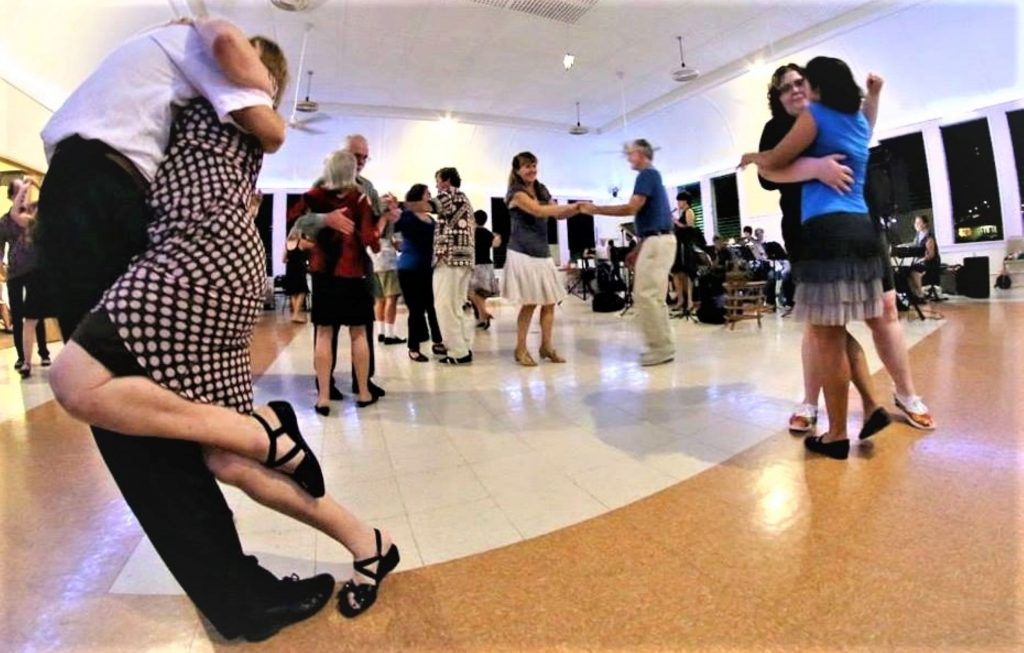Hawai‘i County Council to cut loose from 1937 code regulating dance halls, ‘moral turpitude’
A Hawaiʻi county code created in 1937 to regulate public dance houses and halls — and the moral behavior inside them — likely will be cut loose.
A committee of the Hawai‘i County Council on Tuesday agreed that Chapter 6 Article 2 of the Hawai‘i County Code needed to be repealed.
But fear not, fine residents of the Big Island. You can still dance if you want to.

“Somebody asked me, ‘Is this like a ‘Footloose’ thing? You don’t want dancing?'” said Councilmember Jennifer Kagiwada, who introduced Bill 19.
She was referencing the popular 1984 movie starring Kevin Bacon, whose character’s rebellious spirit shakes up a small town where rock music and dancing are banned.
“No, it’s not a ‘Footloose’ thing,” Kagiwada said. “Probably maybe a little bit more of the opposite.”
She doesn’t think the county wants to be patrolling people’s “moral turpitude.”
One of the conditions in the current code for licensing dancehalls is: No one who has been convicted of any offense involving “immorality, moral turpitude or intoxicating liquor” or is younger than 18 is allowed to work at the dance house or hall.
She also says the section of the code, which was written when Franklin D. Roosevelt was president, is absolutely obsolete.
Upon checking with the Hawai‘i County Finance Department, Kagiwada learned dance hall licenses are no longer issued and there are none currently on the books. She also said some of the law’s language is offensive.
“I just thought taking it out would be good,” Kagiwada said during Tuesday’s meeting. “This really is just cleaning up some outdated code that I came across with my staff.”
The code defines a “public dance house” or “hall” as any house, hall, building or room used for public dancing for which admission is charged or collected or in which female dancing partners receive or have agreed to receive compensation.
License fees start at $5 per day or night and then increase to $50 for 30 days and $150 for one year. A $500 bond is also required.
One of the application requirements is to provide a statement under oath that neither the applicant themselves, the person in charge of the public dances nor any employee have been convicted of any offense involving “moral turpitude or intoxicating liquors.”
A public dance house or hall also must get written consent from 75% of the property owners within a 250-foot radius to be able to operate and is required to be located near or in a building close to a public road or highway.
No drinking is allowed; people can’t be intoxicated if they plan to enter. Children younger than 18 years old also are not permitted during dances.
Other licensing conditions include:
- The dance house or hall and its premises must be brightly lit while in use.
- No “undue familiarity” between partners is permitted during any dance.
- Dancing shall end at 1 a.m.
A person approved in writing by the chief of police or his deputy shall be present at a dance house or hall to keep order and enforce the law and conditions of the license, and no female shall be permitted to dance as a dancing partner until she produces a birth certificate or other documented proof that she is older than 18.
The code also stipulates a fine of up to $500 for anyone found guilty of violating any of the dance hall provisions. Licensees and owners also face the possibility of the dance hall being shuttered for up to a year if they are convicted of any misdemeanor under Article 6.
After the discussion, the County Council Policy Committee on Planning, Land Use and Development gave Bill 19 a favorable recommendation, which means the next step is the bill being considered under first reading during the councilʻs next regular session.
County Council Chairwoman Heather Kimball thanked Kagiwada for taking the time to review the “dusty back corners of the code” and finding such an outdated law that is no longer needed.
“Most of us spend a lot of time looking at what we can add,” Kimball said. “I appreciate you and your staff for taking the time of looking at things that are not appropriate anymore. So thank you for putting this forward.”
Chapter06 Hawaii County Code by Tiffany De Masters on Scribd
Sponsored Content
Comments









